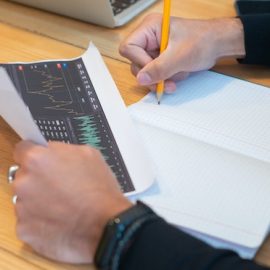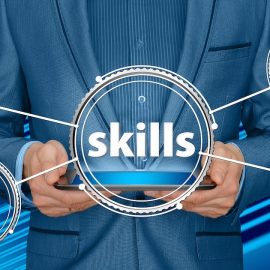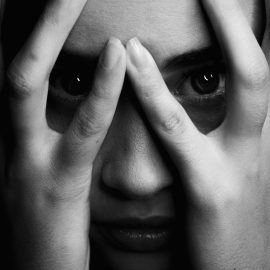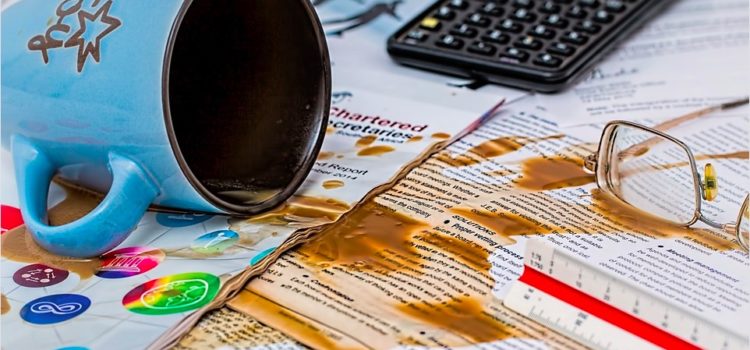
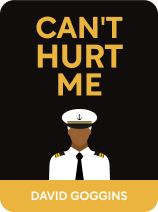
This article is an excerpt from the Shortform book guide to "Can't Hurt Me" by David Goggins. Shortform has the world's best summaries and analyses of books you should be reading.
Like this article? Sign up for a free trial here .
How do you learn lessons from failure? How does David Goggins discuss this in his book Can’t Hurt Me?
According to David Goggins, there are many lessons to be learned from failure. Learning lessons from failure and having perseverance are some of the most important lessons in Goggins’ book.
Read more about David Goggins and how to learn lessons from failure.
Lessons From Failure: Seek Greatness
Sometimes, we’re so scared of failing that we stop ourselves from even trying something. To combat this, frame your failure as an opportunity to learn something so it feels less risky. Then, if you fail, you can evaluate the failure and refine your approach to reach your goal.
Once you’ve met your goal, pushing yourself to go above and beyond rather than settling can help you continuously improve yourself and achieve greatness that distinguishes you from others.
Goggins’s experience attempting to become an Army Ranger and breaking the Guinness World Record for pull-ups demonstrate these principles and how you can learn lessons from failure.
More Training Desired
After Goggins’s SEAL training, he got deployed with a platoon to Malaysia where he realized that he held himself to a higher standard than other SEALS. SEALS are considered elite compared to the rest of the Navy and compared to society in general, but Goggins felt like he desired to push himself, train harder, and earn his keep more than even most SEALS wanted to.
In addition to physical training, Goggins spent his free time studying weaponry and war. In his first evaluation, he got feedback that he should spend some of that time socializing as a way to learn from the other guys informally and understand the job better. But he was introverted and didn’t want to spend time partying in off hours.
Most people take a break when they finish a deployment, but Goggins decided to look into training in the special forces units of other military branches between deployments. He requested to go through Army Ranger training—he felt he could better himself by gaining additional special operations skills.
Army Ranger Training
Goggins traveled to Fort Benning, Georgia for Army ranger training. The training consisted of six different phases, including weapons knowledge, navigation, and reconnaissance. For example, one phase consisted of learning skills in the mountains like patrolling and rappelling.
To prove their skills, trainees had to complete four nighttime field training exercises. One night, a winter storm blew in, and all anyone had for warmth was a thin poncho and each other.
Goggins figured that the storm represented a perfect simulation of the conditions that would make soldiers vulnerable to an enemy attack. Instead of huddling with the group, he walked out to hold part of the perimeter, shouting into the night when he reached it. In doing so, Goggins demonstrated his interest in pursuing opportunities to lead and stand out from the rest. A few others were inspired and did the same.
Breaking the Pull-up Record
Goggins wasn’t content to be known just for his Navy career and ultra races. Though he needed to take a break from ultra races due to dizzy spells, he realized that he did a lot of pull-ups as part of his regular training and wondered if he could break the world record for number of pull-ups in 24 hours. The record at the time was 4,020 pull-ups, which was held by Stephen Hyland. While doing pull-ups, he could take breaks and avoid the dizziness brought on by running.
Goggins reached out to the same organization he raised money for through his ultra running to ask if they’d accept fundraising from this event. Then, a friend of his booked him a spot to attempt to break the record on The Today Show.
To train for this appearance, he ramped up his pull-up regimen—400 pull-ups each weekday and 1,500 on weekend days. This is one example of learning lessons from failure.
Learn Lessons From Failure and Take Action
Learn Lessons From Failure
Learn to reflect on your failure with these steps:
1. Think of a recent failure.
2. Using a journal–on paper this time, if it isn’t already—use the following questions to help you evaluate the failure:
- What did you do well as you prepared for and executed the failure?
- How did you handle the failure?
- How did the failure affect your relationships with others?
- How did it affect your life?
Even if you ultimately failed, it’s unlikely you did everything poorly in the lead-up. This is a chance to recognize the things you did right.
3. Make a list of things you could have done differently. Try to be as honest with yourself as possible.
4. (Optional) As soon as you can, schedule a time to make another attempt at the thing you failed at. If for some reason you can’t attempt the experience again, just do steps 1-3.
5. (Optional) Share your experience on social media with the hashtags #empowermentoffailure #canthurtme.
Seek Greatness
When you eventually reach your goal, it may be tempting to stop there. But many people operate this way. Instead, to set yourself apart from others, keep seeking new challenges rather than settling.
For example, if you reach your goal of running a half marathon, try another challenge. Maybe you try running longer distances or try trail running instead. Or, maybe you choose a different kind of physical challenge altogether, like swimming.
Learning lessons from failure can be a challenge, but it’s an important part of overcoming obstacles.

———End of Preview———
Like what you just read? Read the rest of the world's best book summary and analysis of David Goggins's "Can't Hurt Me" at Shortform .
Here's what you'll find in our full Can't Hurt Me summary :
- What a Navy SEAL says about pushing yourself to achieve greatness
- How to put in more effort to realize your potential
- The 10 challenges you can take on to reach your goals




